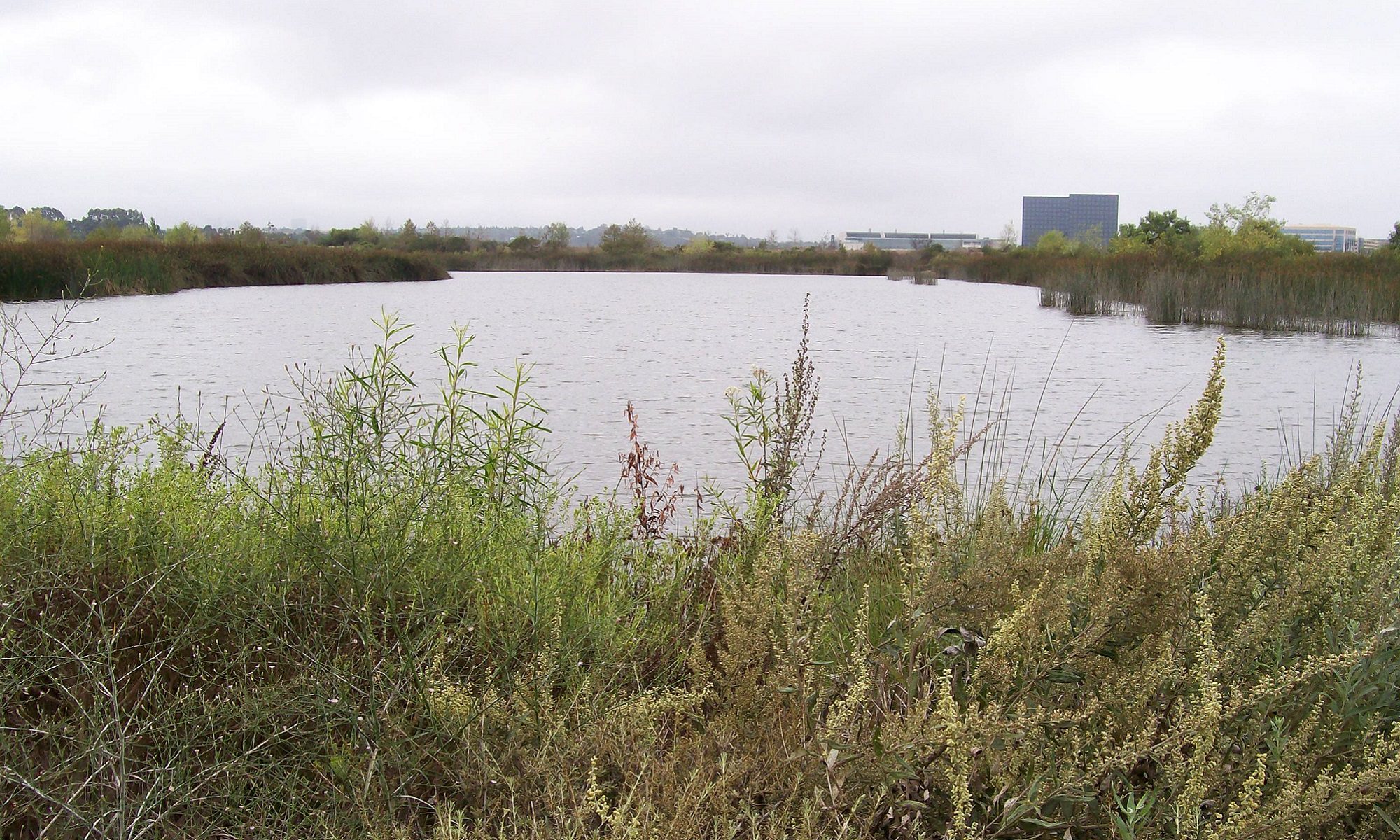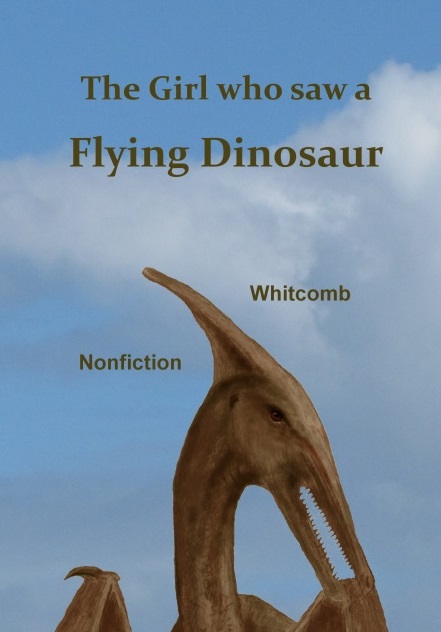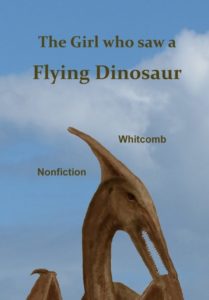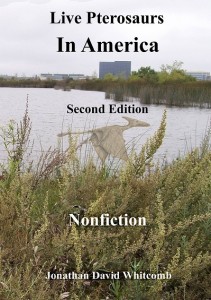 The 1971 pterosaur sighting by the U.S. Marine Eskin Kuhn was not exactly in the United States; this was at the Guantanamo Bay Naval Station on Cuba. But this is near the United States, and a number of Americans have seen similar creatures in a number of the forty-eight states. I have personally interviewed this eyewitness (2010) and I found him to be highly credible; this was no hoax. But because of certain comments by a recent critic, this sighting deserves attention here.
The 1971 pterosaur sighting by the U.S. Marine Eskin Kuhn was not exactly in the United States; this was at the Guantanamo Bay Naval Station on Cuba. But this is near the United States, and a number of Americans have seen similar creatures in a number of the forty-eight states. I have personally interviewed this eyewitness (2010) and I found him to be highly credible; this was no hoax. But because of certain comments by a recent critic, this sighting deserves attention here.
Consider two other sites with more information about this sighting of two pterosaurs in Cuba:
Overview of the sighting of two pterosaurs
While stationed at Guantanamo Bay, Cuba, in 1971, Eskin Kuhn saw, in daylight, two pterosaurs flying about 100 feet above the ground. They were close enough for Kuhn to notice details, and, being talented in realistic drawing, he soon sketched what he had observed. That sketch has been around for many years, but it deserves a closer look, for other eyewitnesses have seen a similar creature.
More about the two pterosaurs in Cuba
“I saw two pterosaurs . . . flying together . . . perhaps 100 feet [high], very close in range from where I was standing, so that I had a perfectly clear view of them. The structure and the texture of the wings appeared to be very similar to that of bats: particularly in that the struts of the wings emanated from a ‘hand’ as fingers would . . .”
There have been, over the years, at least two online criticisms of this sighting report; let’s consider the more recent criticism of this sighting in Cuba, and examine the reasoning involved, for there are problems with the reasoning of this critic (as there are problems with the reasoning of the earlier critic; but that has already been addressed elsewhere).
One comment (by someone with the initials “S.H.”) was in response to a blog post titled “Frigate Birds Are Not Ropens.” It should be known that the comment was made before an important link was added to that post, a link to a site with many paragraphs about the sighting in Cuba, in fact in the words of the eyewitness himself: Eskin Kuhn. Since this comment resembles one or two others, by other critics, it now deserves a response.
S.H. said, “. . . you certaintly [certainly] can’t rule out mistaken identification.” Well, that is interesting, for the comment was made about the post “Frigate Birds Are Not Ropens,” which is about how much eyewitness descriptions of apparent pterosaurs differ from appearances of Frigate birds. If S. H. was thinking about some flying creature other than a Frigate bird, why did he not mention what he was thinking? I don’t mean to be mean to him, for he made the comment before there was any link, on that post, to any site or page with details about Eskin Kuhn’s sighting; but if S.H. was serious about digging to get to the truth about this report, why did he not look deeper or be more specific about possible “mistaken identification?”
S. H. also said that the sketch by Kuhn shows something that “combines features of two completely different sub-orders of Pterosaurs.” I believe he means a Pterodactyloid head crest and a Rhamphorhynchoid tail. Perhaps it would have been more accurate to note that the sketch seems to show a Rhamphorhynchoid with a head crest, for that tail is clearly not that of a Pterodactyloid, but a least a small number of Rhamphorhynchoids did have head crests (although those are few and the head crests in those fossils are small compared with many of those on Pterodactyloids).
But let’s consider what S. H. had in mind, for he also said, ” . . . it looks like a drawing made by somebody who only knew Pterosaurs from childrens books . . .” (he also mentions “dinosaur movies”, although he gives no detail about anything, giving no title of any book or movie). But these investigations of sighting reports have been going on for many years now, and the combination of long-tails and head-crests is common all over the world and in different decades. Indeed, many recent sighting reports, of apparent pterosaurs in the forty-eight contiguous states of the U.S., include this combination, and recent depictions of pterosaurs (as in one or two of the Jurassic Park movies and in other movies and television programs) show non-tail Pterodactyloids. The point? The overall picture of pterosaur sightings, of all time periods and in many countries, shows a preponderance of the combination of long tails and head crests; Eskin Kuhn’s sighting is just one of many similar sightings in North America, Africa, and in the Southwest Pacific.
I interviewed many natives on Umboi Island, Papua New Guinea, during my expedition there in 2004. As would be expected of eyewitnesses of actual flying creatures (in contrast to hoaxes), most of those natives had only brief distant sightings. But a few of those many eyewitnesses were fortunate (or unfortunate, from the perspective of those natives who feel that it is bad luck to see a ropen) to have seen the shape of the ropen. They describe a very long tail (“seven meters” for one ropen). Long-tailed pterosaurs are seen not just by the Westerners who have seen pictures of long-tailed “pterodactyls” in the 1960’s (or whenever); they are seen by natives in remote areas of the world, by natives who have never seen any picture of a pterosaur, by natives who know nothing about fossils of pterosaurs, by natives who have never been influenced by Western ideas about pterosaurs.
S.H. seems to be suspicious of Kuhn’s sighting, but his reasoning is flawed. He also mentioned that Kuhn’s sketch has “none of the features that are less well known to the public, like hair.” But obvious hair is not universal with all species of pterosaur; who said it was? Why would two pterosaurs flying in Cuba in 1971 have to have obvious hair? Some sightings in Papua New Guinea do involve observations of hair, it is true, but not all those sightings. Most people have hair on their arms, but how often do we notice arm-hair on a person who is more than ten meters away? Very rarely, I believe (notwithstanding what my daughters would say). So how many sketches of humans include arm hair? It seems to me that S.H., with this hairless objection, is bending over backwards to try to discredit Eskin Kuhn’s sighting of two pterosaurs in Cuba in 1971.
The comment by S.H. was not approved on the post-page “Frigate Birds Are Not Ropens” for good reason. One of his sentences seems to imply that the person who drew the sketch had fabricated the story. I know that Eskin Kuhn has endured ridicule for his story; I will not allow any more blatant assaults on his character, not if I have any say about that.
I gave Eskin Kuhn a surprise phone call, early in 2010, giving him no time to prepare to my questions about his report of almost three decades earlier. I found his response perfectly harmonious with what would be expected of an honest person who had a real experience many years earlier. He said something like, “It was a long time ago.” To critics who insist on assuming that he was dishonest, I reply: The fault lies in the thinking of the critics.
I include here the original sketch by Eskin Kuhn, drawn soon after his extraordinary encounter on the Guantanamo military station in Cuba in 1971. (Kuhn has given me permission to use this sketch to promote the concept of modern living pterosaurs.)
***************************************************************************************
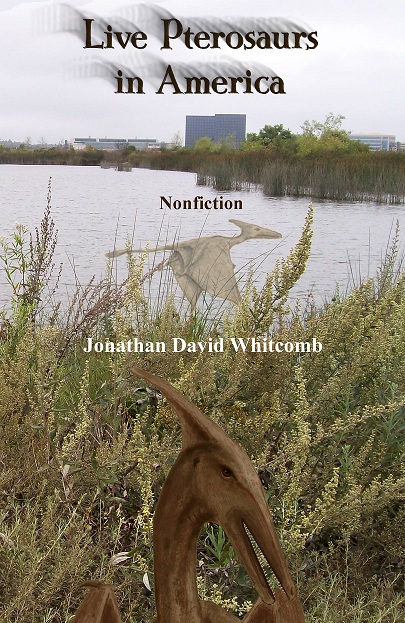 From the Amazon.com description of this cryptozoology book (Third Edition)
From the Amazon.com description of this cryptozoology book (Third Edition)
Encounter eyewitness accounts of living pterosaurs in the United States. Live “pterodactyls?” In the United States? Many scientists have long assumed all pterosaurs died millions of years ago. Now take a whirlwind tour of many years of investigations in cryptozoology, and prepare for a shock: At least two species of pterosaurs have survived, uncommon, not so much rare as widely, thinly distributed.
From another post on the blog “Live Pterosaurs in America“ (Publication of second edition)
“Also newly included in the second edition of the book is the sighting report about two large long-tailed pterosaurs seen in daylight in rural Washington state.”
***************************************************************************************
